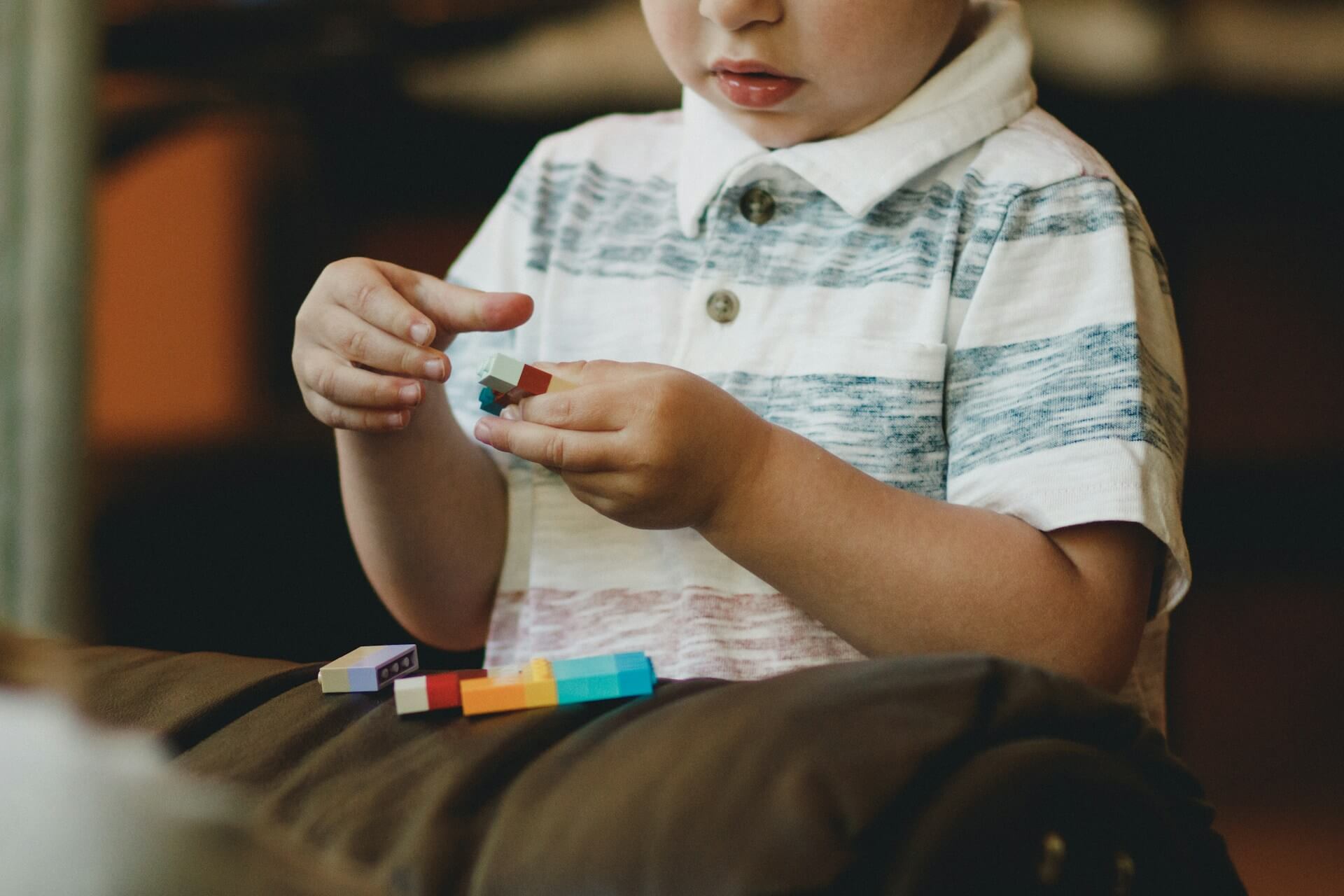When parents first hear the term autism, it can raise more questions than answers. Autism isn’t one single condition — it’s a wide spectrum that shapes how children with autism think, learn, and connect with the world around them.
Each child is different. Some may talk easily but struggle with social cues, while others communicate better through gestures or pictures. What stays true for all is that structure and patience help them feel safe and confident.
Home and school play the biggest roles in their progress. When routines, expectations, and support stay consistent across both places, children are better able to learn and adapt. The next sections share simple, proven ways to make daily life — from communication to learning — easier and more encouraging for every child on the spectrum.
Helping Your Child Communicate
Talking with children with autism can feel different, but small changes make a big difference. Every child has their own way of understanding words — some respond to pictures, others to tone or gestures. The goal isn’t just to talk to them, but to communicate with them.
Do:
- Say your child’s name first so they know you’re speaking to them.
- Keep sentences short and simple — one idea at a time works best.
- Use pictures, hand gestures, or visual cards to make your message clearer.
- Give them time to answer; silence helps them think and respond.
- Get help from a speech and language therapist (SLT) to create a plan that fits your child.
Don’t:
- Ask too many questions back-to-back; it can be overwhelming.
- Use expressions like “hold your horses” or “break a leg” — they can confuse literal thinkers.
- Talk in noisy or busy places where they can’t focus.
Communication grows when your child feels safe and understood. With patience and practice, daily conversations become easier and more natural. Helping children with autism express themselves builds confidence — one clear, calm exchange at a time.
Supporting communication isn’t just about words — it’s about helping your child feel understood.
Reducing Anxiety and Overwhelm
Stress can show up often for children with autism, especially when routines change or their senses become overloaded. They might cover their ears, avoid eye contact, or act out when they feel unsure. Recognizing what sparks these feelings can help you step in early.
Ways to Help:
- Prepare your child for changes, like switching teachers or visiting new places.
- Use pictures or countdown charts to show what’s coming next.
- Create a calm corner at home — a quiet spot where they can relax.
- Try simple calming habits like slow breathing or soft music.
- If anxiety keeps growing, ask your GP or autism specialist about therapy options such as CBT.
Avoid:
- Changing plans without warning.
- Taking them into crowded or noisy environments when possible.
Less anxiety means more focus, learning, and smiles. Once your child feels calm, their confidence and curiosity start to return — proof that peace is powerful for progress.
Once anxiety is managed, learning and communication naturally improve.
Supporting Behavior Positively
Behavior is communication, especially for children with autism who struggle to express feelings through words. Actions like flapping hands or rocking back and forth are often ways to cope with strong emotions — not signs of misbehavior.
Helpful Approaches:
- Watch for triggers that come before outbursts — loud sounds, new settings, or sudden changes.
- Offer safe outlets like squeezing a soft toy or taking deep breaths.
- Celebrate calm responses and good choices right away.
- Keep routines steady and post visual reminders so your child knows what’s next.
Avoid:
- Punishing meltdowns — they’re usually a sign of distress, not defiance.
- Using sarcasm or long explanations during tense moments.
Write down what happens before and after a behavior. Patterns often reveal what your child is trying to communicate. Encouragement and patience go farther than punishment — every calm response helps your child feel safe and supported.
Tip: Keep a simple log of what happens before and after a challenging behavior to find patterns.
Managing Eating Challenges
Picky eating is common among children with autism, and it’s usually linked to sensory differences — the feel, smell, or color of food can be overwhelming. For some, crunchy foods are comforting; for others, smooth textures are easier.
Practical Tips:
- Keep a food diary noting what, when, and where your child eats.
- Add one small new food at a time alongside familiar favorites.
- Offer limited options — too many choices can cause stress.
- Make meals predictable by keeping a steady time and calm setting.
- Check for constipation or tummy issues that may affect appetite.
Seek Help If:
- Your child eats non-food items (pica).
- Their weight or nutrition seems off.
- They choke or gag often when eating.
Ask your GP or a dietitian who understands autism for safe, realistic solutions. Small, consistent efforts can help children eat better and feel better too.
Encouraging Healthy Sleep Habits
Rest doesn’t come easily for many children with autism. Some take hours to fall asleep or wake often during the night. This can stem from anxiety, sensory sensitivity, or low melatonin levels.
Tips for Better Sleep:
- Stick to the same bedtime steps every night — it builds comfort and predictability.
- Turn off screens at least an hour before bed.
- Keep the bedroom dark, cool, and quiet.
- Try blackout curtains or gentle white noise.
- Track sleep patterns in a diary to spot what helps or hurts.
Medical Support:
- Talk to your GP if sleep struggles continue.
- In some cases, specialists may recommend melatonin to help reset the body clock.
A good night’s rest supports focus, emotional balance, and growth. When sleep improves, everything else — from mood to learning — becomes easier.
Quality rest affects mood, learning, and daily functioning — it’s essential, not optional.
Promoting Good Health and Regular Check-Ups
Good health starts with routine care. Regular visits help spot problems early and keep children with autism comfortable with medical settings.
- Schedule dental, vision, and medical appointments regularly.
- Use pictures or short explanations before appointments so your child knows what to expect.
- Bring noise-cancelling headphones or a favorite toy to ease stress.
- Let staff know how best to communicate with your child — short instructions and calm tones work best.
Children aged 14 and older with learning disabilities are also eligible for annual health checks. With preparation and understanding professionals, medical visits can feel safe and stress-free.
Building Friendships and Social Skills
Social situations can be tough when words, noise, or new places feel heavy. Many kids want friends but aren’t sure how to start or what to say. Gentle practice at home builds confidence for real-life moments.
Ways to Help:
- Model short greetings (“Hi, I’m Sam”) and simple turn-taking games.
- Ask teachers to use buddy systems or small groups during play.
- Try brief role-plays for conversation starters and ending chats politely.
- Join clubs that match interests—art, Lego, robotics, or music often feel safer and more predictable.
- Check local groups that are sensory-friendly or autism-friendly for low-pressure meetups.
Avoid:
- Pushing long playdates before your child is ready.
- Comparing progress with classmates; each path and pace is different.
Friendships that grow slowly tend to last longer. Small wins—one hello, one shared game—stack into real social skills. With time, routines, and patient peers, belonging starts to feel possible.
Friendships, when developed at a comfortable pace, strengthen confidence and belonging.
Partnering with Teachers and the School
Partnership with school staff changes outcomes. When home and classroom use the same tools, kids feel safe enough to learn. Clear profiles, predictable routines, and simple supports make school days easier to manage.
At School:
- Share strengths, sensitivities, and motivators so teachers know what works.
- Request an Individualized Education Plan (IEP) or learning support plan with clear goals.
- Meet the SENCO to adjust materials, instructions, and pacing.
- Ask for sensory supports—quiet corners, flexible seating, or headphones.
- Use visual timetables, chunked tasks, and planned movement breaks.
At Home:
- Review lessons with pictures, hands-on examples, or short videos.
- Mark small academic wins; praise effort and strategy, not only scores.
- Keep a two-way notebook or email thread with teachers for quick updates.
Joint problem-solving works best: agree on one target at a time (e.g., following the morning routine), pick the same cues in both places, then track progress weekly. Consistency lowers stress and raises attention for learning.
When both environments align, children feel secure enough to learn and thrive.
Supporting Independence and Daily Living Skills
Independence grows with practice, not pressure. Daily routines offer safe places to learn planning, sequencing, and choice-making.
Ideas:
- Break each task into tiny steps with pictures: wash hands → soap → rinse → dry.
- Place checklists at eye level near the sink, closet, or school bag.
- Offer bounded choices (“Blue shirt or red one?”) to build decision skills.
- Use timers for start/finish cues; celebrate each completed step.
Skills don’t need to be perfect to be useful. A steady rhythm—same tools, same order—reduces stress and lifts confidence. Over weeks, your child can do more on their own and feel proud of it.
Note: Keep task lengths short at first, then add time or steps as success builds.
Finding Family and Community Support
Support helps parents stay strong. Caring for a child with extra needs is meaningful and also tiring, so shared wisdom and breaks matter.
- Join local or online parent groups for tips and encouragement.
- Use trusted organizations for guidance and workshops.
- Ask your GP about family therapy, carer support, or respite options.
- Teach siblings simple ways to help and include, so home feels fair and warm.
Community support helps parents recharge and children feel accepted.
Final Thoughts on Raising and Supporting Autistic Children
Progress looks different for every child, and that’s okay. The aim is comfort, connection, and steady growth—not “fixing” differences. Patience, structure, and teamwork between home, school, and health professionals set the stage for success.
Small changes—clear words, visual steps, calm spaces, regular routines—can lift daily life in big ways. Keep focusing on strengths, track what works, and build from there. With consistent care and simple tools, learning feels safer, behavior settles, and confidence grows.















